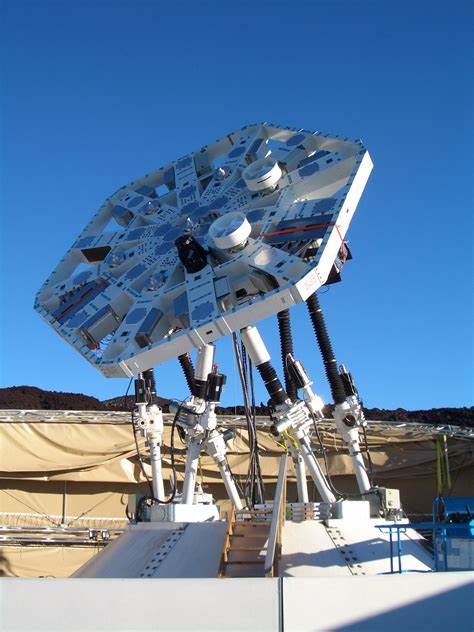Project Background
This project draws foundational inspiration from the Array for Microwave Background Anisotropy (AMiBA) radio telescope, an innovative interferometric array designed to probe the anisotropies of the cosmic microwave background with exceptional precision. Leveraging AMiBA’s hexapod mount design, which allows for meticulous azimuthal and elevation adjustments, this project adapts similar advanced structural engineering principles to create a scalable, modular observation framework.
AMiBA’s correlation of multiple baseline data from its individual antenna units has significantly influenced our approach to signal processing and data synthesis. Specifically, the telescope’s use of short baselines to achieve high angular resolution in detecting fine temperature fluctuations in the CMB served as a blueprint for our array configuration. In our design, inspired by AMiBA’s methodology, we implement a phased-array processing model to enhance spatial resolution and sensitivity, allowing for precise signal extraction in low-noise environments.
The use of cryogenic receivers in AMiBA to minimize thermal noise in CMB detection informed our decision to incorporate similar noise-reduction mechanisms. By modeling our equipment on AMiBA’s sophisticated integration of polarization measurement and correlation receivers, we enhance the capability to distinguish between signal fluctuations with high spectral purity, opening up a broader spectrum of research applications, from cosmological observations to high-fidelity deep space communication.
Through this approach, we seek to emulate the precision and versatility of AMiBA while adapting its core principles to address new scientific inquiries, thereby pushing the boundaries of observational astrophysics.

The AMiBA radio telescope: a Cosmic Microwave Background (CMB) experiment mounted on a 6 centimeters carbon fiber hexapod.